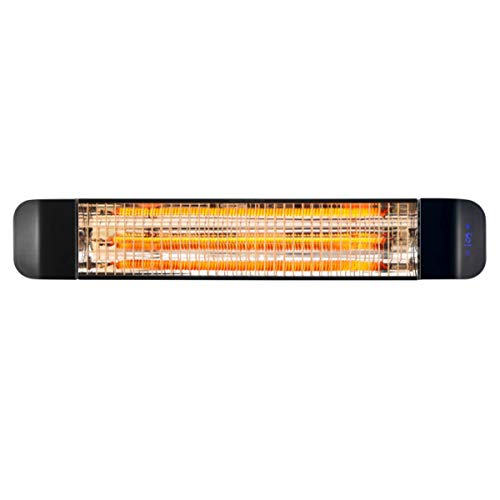What You Should Be Focusing On Improving Patio Heat Lamp Electric

How to Choose a Patio Heat Lamp Electric
When it comes to heating your patio, there are several options. In contrast to propane models that require refills electric heaters can provide instant heat by simply flipping a switch or pressing a button.

They also don't release gasses that might pose a health risk. Some have adjustable settings for heat for different distances.
Type of Heater
You can enjoy your outdoor living space throughout the day and throughout the year with the proper patio heater. Patio heaters come in many different types including freestanding propane models, natural gas models as well as ceiling or wall mounted electric radiant heaters. The choice you make will depend on the size of your space, the power sources available, and your personal preferences.
The majority of patio heaters use electricity, natural or liquid gas to generate heat. They release heat through a combination convection heating and radiant heating. The output of heat from patio heaters is measured in watts, which can be converted to British thermal units (BTUs) to give a comparative. Some models have adjustable heating settings for greater flexibility.
Patio heat lamps incorporate an electric burner on a pole, and a perforated screen that reflects flames and sends heat downwards to warm people, objects and furniture. Some models have a reflector atop the burner that can be plated with silver to decrease the amount of heat emitted upwards.
Gas patio heaters are the most common patio heaters. They are able to heat multiple tables quickly and evenly. They can be portable and run from propane tanks or plumbed into your natural gas line, which is more convenience and lower upfront installation costs, but also requiring an ongoing cost of fuel.
A increasing number of homes are equipped with natural gas lines, making these the ideal solution for those who prefer using a gas patio heater. They are easy to install, but do require a specialized and functioning gas line in order to function safely. Natural gas heaters that are portable come with extension hoses to help overcome this limitation, but they could be a trip hazard and may pose an additional fire risk when not being used.
Safety
Electric patio heaters are safe to use in covered areas, as they permit heat to radiate upwards and not outward. They are not designed for use under an unprotected roof. The heater must be located at least 6" away from the ceiling or 18" away from the wall adjacent to prevent fire hazards.
The propane and gas patio heaters are only suitable for installation in enclosed areas that are fitted with a durable cover designed for outdoor use. These covers are typically made of fire-retardant canvas and have a roof that can be closed. The safety issues with these kinds of outdoor patio heaters is due to the flame and fumes they release. They should be placed away from items that ignite like curtains and chairs.
When installing an electric patio heat lamp or any other patio heater, always adhere to the manufacturer's instructions and safety precautions carefully. Be sure to select the one with UL and CSA certifications, and read the owner's guide thoroughly. Make sure that the heater is not within reach of children and pets. Some free-standing patio heaters like EUROM have a built-in tipping protection that shuts down the heater if it is tipped over.
If your patio heater is connected to natural gas lines, it's important to check the condition of the line periodically and to test it for leaks by a qualified professional. If the line requires to be replaced, make sure to hire an authorized plumber. A professional can determine whether the line is properly routed or should be run through an underground pipe. Best patio heater electric can make sure the patio heater is plugged into an outlet that is GFCI (ground fault circuit interrupter) designed to guard against electrical shocks and fires.
Installation
The the height at which a patio heater is positioned determines the amount of heat it will radiate into the space. The heater should be placed away from any surfaces such as plastic and wood that could deform. Depending on the model of the heater, you can choose to place it on a wall or a structure using standard mounting brackets. Best electric patio heater come with soft start, which decreases the peak current in order to protect your circuits.
